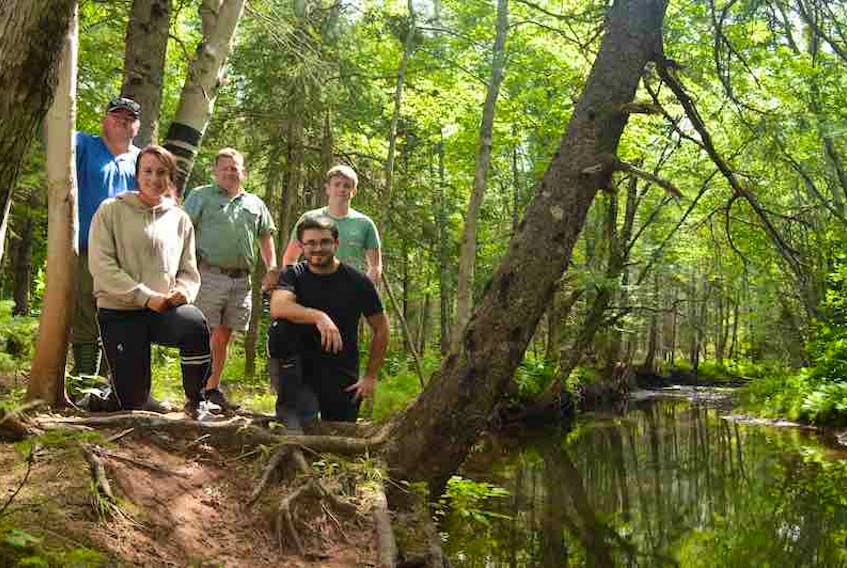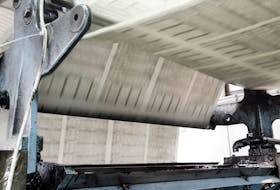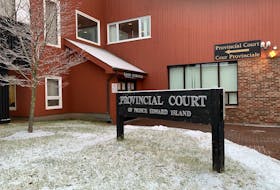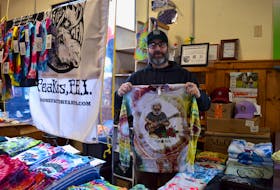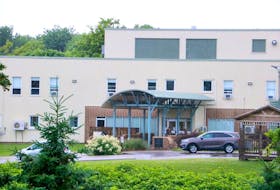MIMINEGASH, P.E.I. — After decades of absence, Atlantic Salmon are back in the Miminegash River.
Danny Murphy is the co-ordinator for the Roseville/Miminegash Watersheds Inc., a non-profit group that takes care of some of the rivers and streams in western P.E.I.
Murphy has volunteered with the group since 2007 and has worked as the co-ordinator for the last 12 years.
He's also an avid angler.
In the fall of 2018, he caught a fish he didn’t recognize.
“What is this?” Murphy recalls asking himself, before texting a photo of the catch to P.E.I.’s freshwater fish biologist, Rosie MacFarlane.
“That’s a salmon parr,” she texted back. “Let it go.”
DID YOU KNOW: Roseville Pond Natural Area
- The Little Miminegash River system flows into Roseville Pond at the edge of the Gulf of St. Lawrence.
- Hunters approached the Roseville/Miminegash Watersheds Inc. to see if they could team up to create an area that would be safe for waterfowl to nest.
- Establishing the official natural area meant years of work contacting landowners to make sure they were on board.
- The group has invested many seasons of work to improving the access road, installing a floating dock and constructing a four-kilometre walking trail with stunning views of the pond, beach and dunes.
- It took lots of help from the community and funding partners, but the watershed group achieved a park located off Rte 14 In Roseville.
He wasn’t the only fisherman to catch one of the precious salmon that year, so MacFarlane came out to electrofish the area.
A common way to sample fish in rivers, electrofishing sends an electric current through the water and stuns fish so they can be caught in a net and identified before getting re-released into the water.
MacFarlane and her team found eight salmon parr in a 200-metre stretch of the Miminigash River in that 2018 survey.
“Everybody was pretty excited over that, to see them back in a river where they had been missing for 20-plus years,” said MacFarlane.

There used to be a salmon run in the Miminegash in the 1960s, but the fish dwindled over time and an extensive study of rivers in 2001 and 2002 found none remained.
Murphy’s 2018 find wasn’t just a coincidence, he found salmon parr again in 2019.
The watershed group has posted signs along the streams to make anglers aware of the difference between salmon parr and brook trout. By law, salmon parr and smolts must be released back to the water.
“We never caught any adult salmon yet, but they were here. The babies didn’t just appear,” said Murphy.
If anyone does catch an adult salmon, Murphy asks for it to be released.
“It’s so important to the river right now.”
The Miminegash is the only south-draining river in the West Prince region that has salmon, and it’s not exactly clear why, said MacFarlane.
These parr may be the result of a strong salmon run throughout the Maritimes in 2011, she said.
“Salmon, even though they return to their natal rivers, they do tend to stray a little bit,” she said. “When their numbers are high like that, you do get more straying.”
WHAT THEY DO:
- Roseville/Miminegash Watersheds Inc. takes care of six unique watersheds in western P.E.I. including Black Pond, Miminegash River, Little Miminegash River, Campbellton, White’s Cove and Dalton’s Brook.
- A watershed is the area of land that drains both surface and ground water into a particular river or stream.
- Roseville/Miminegash Watersheds Inc. manages streams and rivers in the communities of Waterford, Pleasant View, Palmer Road, St. Louis, St, Edwards, Miminegash, St. Lawrence, Lauretta, Roseville, Brocton, Campbellton, Glengarry and Burton.
Another possibility for the return is that there were always really low numbers in the river system and enhancement activities helped the population rebound.
“The group has been working very diligently on the Miminegash river and nearby streams in their watershed area for quite some time. They’re very dedicated, they’ve got local people that truly care about the rivers in their area.
“Some of the work that has made a real difference is just getting the branches opened up,” said MacFarlane.
Work on the rivers and streams can take years to show impacts on water quality and work began on the stretch where the salmon were found back in 1992. At that time, an electrofishing survey found a total of only 72 fish in a seven-kilometre stretch of river, said Murphy.
“The river was beaver-impacted right from the brackish water,” said Murphy.
Beavers make dams that widen the river and remove tree-cover. The water heats up too hot for salmon to survive.
“The thing they need the most is a rocky stream bottom," said MacFarlane.
“They like to have some deep pools to rest in, but they have to have gravel and cobble stream beds in order to lay their eggs and for them to successfully hatch their young. For those young juvenile fish to have the habitat they pretty much need exclusively rocky-bottom rivers. So, what the group has done is provide more of that flowing water and clean rocky bottom. That’s paid off.”

Murphy’s goals are simple, plant trees, remove blockages and improve water flow to help the river stay cool and clear. It’s not easy work, but after nearly 30 years, the results are here in the shape of the salmon parr.
“That’s why finding the salmon is so important to us,” said Murphy.
The Miminegash is one of just a couple dozen of rivers with salmon on P.E.I. MacFarlane said there used to be more than 70.
“We’re starting over in building the salmon population,” said Murphy.
After the 2018 discovery, Murphy’s team is more focused than ever on restoring the salmon habitat.
“We’re starting over in building the salmon population,” said Murphy.
And he has good help.
“I love this type of work, outside,” said Daniel Gavin. The 2020 Westisle Composite high school graduate is in his third summer of stream work with Murphy.
“You feel like you’re doing something useful in the world,” he said.
Gavin hopes to take the Wildlife Conservation Technology course at Holland College in the fall.
This summer, the group has installed temperature loggers in several locations. A hand-held YSI meter on loan from the P.E.I. Watershed Alliance gave Murphy a better picture of water health by measuring nitrogen, pH, oxygen and salinity in the rivers in the area.
Alison Jenkins is a local journalism initiative reporter, a position funded by the federal government.

